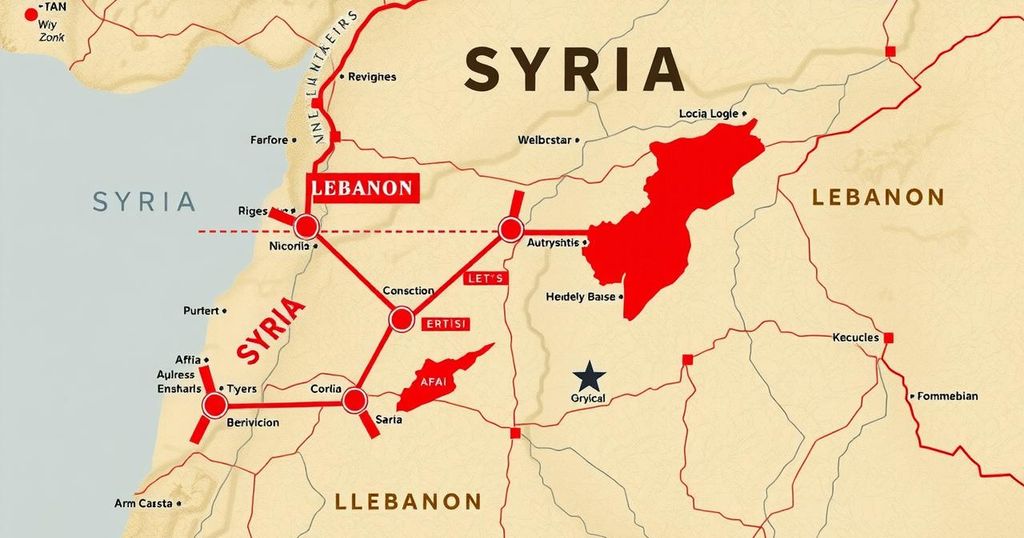The Syrian newspaper Thawra reported on March 28, 2025, a security crackdown against Hezbollah cells in Sayyidah Zainab, reflecting escalating tensions with the Iranian regime. The Syrian Ministry of Defense accused Hezbollah of infiltrating territory, resulting in the death of soldiers. The article highlights Iran’s involvement in Syria via direct intervention and proxy forces, emphasizing its continued influence and the impact on regional stability.
A recent report by the Syrian newspaper Thawra, dated March 28, 2025, outlines a security crackdown by the Syrian Ministry of Interior against Hezbollah cells operating in the Sayyidah Zainab area near Damascus. On March 27, the Rural Damascus Security Directorate disclosed on the platform “X” that these cells were arrested for planning “criminal operations” aimed at destabilizing the region, with images released showing security forces apprehending three individuals during the operation.
The report highlights the rising tensions between the Iranian regime and the Syrian authorities. The Syrian Ministry of Defense has accused Hezbollah operatives of infiltrating Syrian territory, an action that resulted in the deaths of three Syrian soldiers. This incident comes amid heightened scrutiny regarding Tehran’s influence in Syria, which has been significant since the Syrian conflict’s inception in 2011.
Thawra details that Iran has maintained its strategic interests in Syria through both direct military intervention and the deployment of proxy forces such as Hezbollah. Notably, Hezbollah participated in pivotal battles like the 2013 battle of Qusayr, while the Quds Force of the Islamic Revolutionary Guard Corps (IRGC) has been integral in providing military training and intelligence support to the Assad regime, particularly in suppressing dissent.
The Iranian regime’s involvement in Syria transcends Hezbollah, with early intervention from IRGC forces leading to significant casualties, including over 2,100 fighters by March 2017. Thawra also alleges Iran’s complicity in the Assad regime’s use of chemical weapons during the 2013 Ghouta attacks, further emphasizing Iran’s role in supporting military operations alongside Russia and Hezbollah.
The border region between Syria and Lebanon has emerged as a critical corridor for Hezbollah’s illicit activities, including arms and drug smuggling, purportedly coordinated with Iranian backing. Recent tensions have escalated along this 375-kilometer border, with multiple instances of Hezbollah’s involvement in cross-border operations being reported.
The Thawra report concludes that Iran’s interference in Syria, whether through direct military actions or proxy forces like Hezbollah, remains a persistent threat to regional stability. The crackdown on Hezbollah cells in Sayyidah Zainab is a manifestation of the ongoing discord between Tehran and Damascus regarding Iranian influence in Syria’s political landscape.
The report by Thawra elucidates the complex dynamics of Iranian influence in Syria, highlighting tensions between the Iranian regime and Syrian authorities. It emphasizes Iran’s reliance on proxy forces like Hezbollah, as well as direct military intervention, to secure its strategic interests. The crackdown on Hezbollah cells in Sayyidah Zainab reflects the ongoing power struggle and underscores the broader implications for regional stability and security.
Original Source: www.ncr-iran.org






